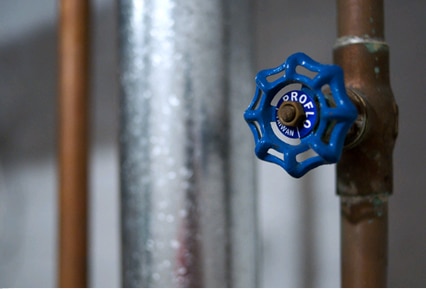As a homeowner, there are certain maintenance tasks, safety features, and basic pieces of knowledge about your property which you should know like the back of your hand. When your washer springs a leak, do you know where the water shut-off is? When your teenage daughters have overloaded a bathroom outlet, do you know where your electrical panel is to flip the breaker switch? When you’re thinking of building a new fence, do you know your property line so you don’t get into a kerfuffle with a neighbor?
With some basic knowledge of your home, you’ll be confident in answering these questions, and more.
Below you’ll find a list of things every homeowner should know the location and operation of for safety, maintenance, and peace of mind.
1. Electrical Panel(s)

Every home will have at least one main electrical panel which controls all the electricity entering your home. It is generally somewhere off the beaten path: in a closet, basement, garage, etc. In some instances, it may be outside — this is generally the case with newer or remodeled homes in dry environs (we’ve had outdoor panels here in Colorado). If you’re having trouble, consult your original home inspection, or call the electrical company.
You’ll need to access the panel most often for two fairly common scenarios: an outlet in your home has been overloaded, which has blown a fuse (although this is common verbiage, panels don’t use fuses anymore, but rather circuits), and you need to reset it in order to restore power; or, you or an electrician is doing some electrical work (like installing a new outlet or light fixture), and power needs to be turned off to certain areas.
When you open the cover plate, there is usually one big switch at the top, followed by a row or rows of smaller switches. The main switch at the top will turn off electricity to your entire dwelling. The switches below control individual areas, rooms, or even dedicated appliances in your home. These switches should be labeled; if not, you and a partner can often figure them out by turning on everything in your home, and systematically flipping the switches to see what turns off (just know you’re resetting clocks, sprinkler timers, etc.). You can also pay an electrician to do a more thorough job of it, although they pretty much do the same thing.
Some homes also have subpanels in addition to the main. These are simply smaller electrical panels that control a separate region of your home or property. They were likely added because the space was either very far away from the main, there was a home addition which needed a substantial amount of electricity wired to it, or new electrical work was done to upgrade or get something up to code. You’ll often find them for garages, outbuildings, or additions.
2. Water Shut-Offs

A typical water shut-off valve. This is for a dishwasher and is found underneath the kitchen sink.
Knowing where you can turn the water supply off for your appliances and for your home is an important safety matter. There are multiple instances in which you’d need to turn water off: an appliance has sprung a leak, you’re leaving for vacation and want to turn the water off as a precaution, you’re doing some DIY plumbing work, etc.

A small water shut-off valve. This is for a humidifier built into a home’s HVAC system.

The shut-off for an ice maker and refrigerator water dispenser can often be found underneath the kitchen, in a basement utility closet.
You’ll generally have individual shut-off valves for any water source in your home: toilets, faucets, ice makers, water heaters, washers — you name it. They come in a variety of shapes and are sometimes in a funny location. What you may not have is an accessible shut-off for tubs/showers. Sometimes you’ll have panels or access in spaces behind bathrooms, but in many cases, you’d need a plumber to shut off those water sources.

A typical outdoor main water shut-off.

A typical indoor water shut-off. (Note that either type of shut-off, whether handle or knob, can be found both in outdoor and indoor shut-offs.)
You’ll also then have a main shut-off which would cut water to the entire house. In warmer environs, this is often found outside. In colder areas (basically anywhere with a noticeable winter), it’s usually inside, often in basements, laundry rooms, utility closets, etc.
3. Gas Meter and Shut-Offs

A gas shut-off valve for a hot water heater.
Much like your water shut-offs, your gas valves are also important to know for safety reasons. As with water appliances, your gas appliances will have individual valves to turn them off. This includes ovens, water heaters, clothes dryers, fireplaces, etc.

Your master gas shut-off valve will be located at the meter on the exterior of your home.
There’s also a master shut-off which will cut your entire home’s gas supply. This will be located at the exterior of your home, on the gas meter. It does require a wrench to turn off, which can be bought on Amazon. Some homes also have a master shut-off inside the home in addition to the master at the meter.
In the vast majority of cases, emergency and utility personnel would rather you not turn off the master switch for your gas, largely because it usually stems from a dangerous situation. If you detect a gas leak that can’t be remedied by shutting off the appliance’s dedicated valve, you should be getting out of dodge and calling 911 and/or the gas company.




